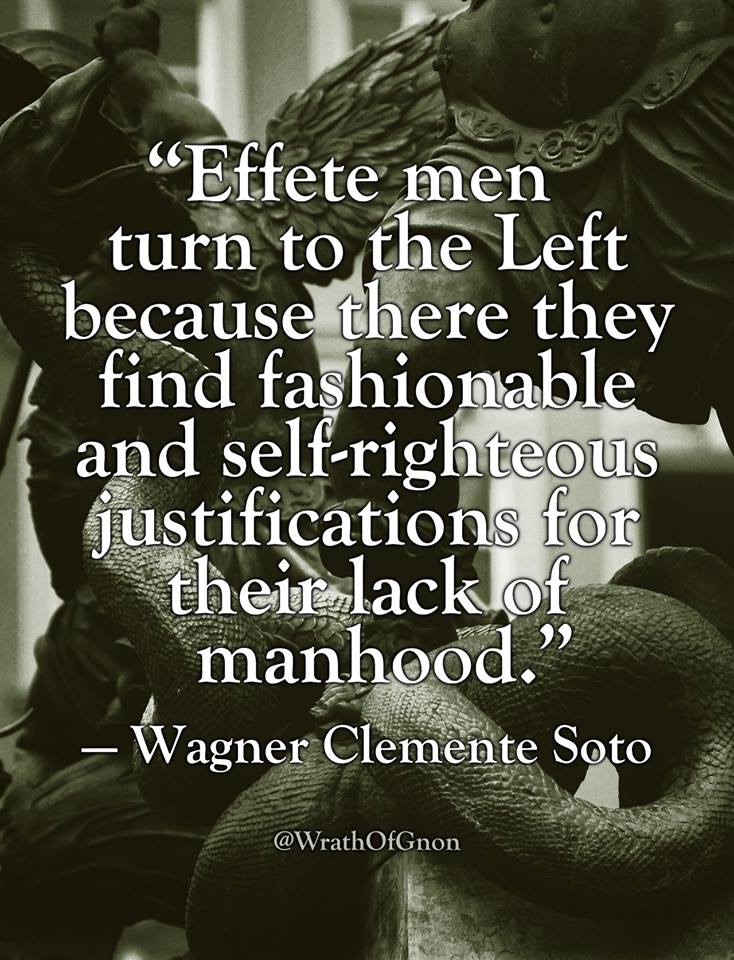





































Jock Itch is very similar to Athlete’s Foot – a fungal infection of the skin in the groin caused by excess moisture and chafing. But, like Athlete’s Foot, once you get it, it can be difficult to clear.
Well, not to my surprise at all, over the transom come reports that taking Ivermectin prophylactically helps prevent and clear Jock Itch – which makes perfect sense.
A couple of things to remember: if someone develops skin fungal infections from the chafing and moisture caused by obesity, that’s disgusting and you MUST MUST MUST lose weight, not just “manage” the side effects.
If you develop Athlete’s Foot or Jock Itch from sweating in poorly-breathing clothes, just fix that. Get a cotton or wool layer to wick moisture away from the skin. Wearing polyester or nylon socks and/or underwear is just a bad idea in general.
The reports I’ve seen about Jock Itch are as a totally unforeseen “happy surprise” side-effect of taking Ivermectin orally; but as with Athlete’s foot, I see no reason not to apply the Pony Paste as a topical treatment directly on the skin as well. Get it from both the inside and the outside.
Poor Lou. He just needed some Vitamin I and cotton boxers. But points to Flahrda Snow Bird Mr. Ferretti for having kept it old-school low-key back in the Nine-O and calling it… “Heat Rash”. IYKYK 😉
Today is the Feast of St. Michael the Archangel, and I am going with the Byzantine style this year even though on the Byzantine Calendar this feast is observed on November 8. Why? Because the Byzantine name of the Feast is just about the coolest, most macho thing you’ve ever heard. Check it out:
The term “synaxis” in this context refers to “a common commemoration of a number of saints in a single service”.
Also, I just like saying the word “synaxis”, because… easily entertained. Talk about a six dollar word!
I also like referring to Angels as “Heavenly Bodiless Powers”. I reckon they like it too, because the whole business of depicting Angels as winged babies, or as Precious Moments figurines must be galling to them. “Heavenly Bodiless Powers” is not only macho, it is also much more accurate a description of their nature.
Here is a really good page (albeit Eastern Orthodox, but the content is totally sound) about our friends the Heavenly Bodiless Powers.
And remember, this… YES:

This… NO:

And for your musical interlude, Bortniansky’s Cherubic Hymn Number 7:
“All we that in mystery
Holy Cherubim portray
As the life’creating Trinity
With thrice-holy hymn we adore and praise.
Come, let us cast off all earthly care,
And forget every vain employ.
FOR THE KING OF ALL COMES IN TRIUMPH
BY UNSEEN HOSTS OF ANGELS BROUGHT
TO US THAT BID HIM WELCOME.
ALLELUIA, ALLELUIA, ALLELUIA!”
St. Michael and all Heavenly Bodiless Powers, pray for us!
Make no mistake: the U.nnamed S.tate A.ctor did this.
Remember this threat from Biden👇#NordStream2 https://t.co/UTyLyY2B6I
— KT (@KateM121211) September 27, 2022
And, of course, the dementia clown show/Jonestown poisoning campaign continues apace:
Biden telling people to prepare for the hurricane by getting vaccinated. 🤡pic.twitter.com/n7A3wS4ZqM
— Hodgetwins (@hodgetwins) September 28, 2022




























Dear Student,
We’re so happy to let you know that Mazza classes are now only 3 weeks away!
Thanks to all of you who have already signed up (and taken advantage of our discounted pricing). Sign-up by October 8th to get the discounted pricing!
 Wednesday October 19th “Spiritual Warfare (Good vs Evil): Resist the Power of the Dark Side!” begins.
Wednesday October 19th “Spiritual Warfare (Good vs Evil): Resist the Power of the Dark Side!” begins.And… sometime this Fall (God-willing) the long-awaited Mazza book on The Papacy and Pope Benedict’s Resignation is to be published!
Lastly, requesting prayers for our family as we have some health challenges at the moment.
Thanks again.
God Bless,
Dr. Ed
The new Prime Minister of Italy.
Wow. pic.twitter.com/fkKTM8I9Fs
— Aaron Ginn (@aginnt) September 26, 2022
I’ve never met Mr. Mann of DRBO.org, but I’m just so delighted at how the fam came through for him. I can’t tell you how much fun it has been to pull up his Crowdfunding page and watch the tally ratchet higher, ever higher, over the past few days.
The preferred surgery for him is just over $36,000, and as I write this, the tally is at $34,000, so almost completely covered.
I just feel so darn… proud. Way to go, guys. Way to go.
I’m told Mr. Mann put the Crowdfund up five days before I posted it, and then Frank Walker at the invaluable Catholic news and blog aggregator Canon212.com subsequently featured it, and had only received a couple of donations. All Mr. Mann needed was to get the word out, which came when a friend of his, whom I don’t know, emailed me.
This can’t but remind us analogically of The Communion of Saints. We’re part of a massive network, almost always invisible to us even here on earth, that springs into action when the cry goes up. We just need to activate the network, so to speak. In the case of the Communion of Saints contained in the Church Triumphant, Church Militant, and Church Suffering (the Poor Souls in Purgatory), the key is the ACTIVATION. In the world- the Church Militant- activation could be called “notification” or “networking”. In the Divine Economy, it’s called prayer. I have no idea, but I suspect that Mr. Mann PRAYED that help come, and that… fires were then subsequently lit here on earth in the Church Militant, which is SO VERY connected to the Churches Triumphant and Suffering, as a direct result.
Again, folks, I can’t thank y’all enough.
(Originally penned and posted on April 20, ARSH 2020, while most of the planet was cowering indoors. A few references have been updated to reflect today’s date – September ARSH 2022. -AB)
Seven years ago I began a project on the overarching psycho-spiritual pathology in the world today which explains, at least partially, behaviors that are, to morally sane people, incomprehensible. This pathology is called Diabolical Narcissism.
Diabolical Narcissism is when a human being freely chooses, for whatever reason, to voluntarily purge himself of all love, or charity. I added the term “diabolical” to the name of this pathology precisely because this condition is exactly what Lucifer and one third of the angelic beings did when they fell. And yes, non-corporeal rational intellects are very, very real, both the good ones and the fallen ones, which are called “demons”. If you can’t deal with that, then just stop reading now, because it is absolutely essential to understanding what drives a man like Bill Gates.
My research was spurred by my crossing paths with an extreme Diabolical Narcissist psychopath that I had met in that hive of diabolical narcissists – Rome. Rome, being the See of Peter, the visible earthly head of the One True Church, and being massively infiltrated over the past 100 years, has been a magnet for DN humans, many of them sodomites. The demonic presence, oppression and relentless attack on Rome has been every bit as bad as Pope Leo XIII foresaw and warned the world of. This person turned out to be demonic in every sense, being one of, if not the most internationally notorious layman sodomites on the Rome/Vatican clerical gay scene for almost 25 years. And folks, THAT IS SAYING SOMETHING. The horror stories related to me by this person’s closest family members, other family members, friends, acquaintances, work colleagues, victims, enemies, etc. have been non-stop for over half a decade now.
But, where sin abounds, grace abounds all the more. The good that has come out of this ghoulish nightmare has been that massive insights into the mind, tactics, behavior and origins of Diabolical Narcissism have now been codified in my nearly three hour video presentation on the topic, along with countless thousands of written words in this space. Over a million people have engaged the topic, with many, for the first time, finally getting at least a partial explanation for the incomprehensible evil behavior of their abusive spouse, boyfriend/girlfriend, parent, child, boss, co-worker, friend, priest, etc., with PATHOLOGICAL AND EFFORTLESS LYING, GASLIGHTING and PROJECTION being the three most common.
Because narcissists have, by definition, purged or nearly purged themselves of love, they all share the same emotional palette. They are capable of only negative emotions that do not proceed from love, namely: ANGER, HATRED, JEALOUSY, and FEAR. Being thus crippled in their very humanity, they struggle to appear “human” to others, and must project a false facade in order to conceal their true monstrosity and diabolical nature. Some are more successful than others. Politician psychopaths like Bill Clinton are able to appear “charming”. Some, like Bill Gates, struggle to appear human.
Within the set of Diabolical Narcissists there are two broad categories: the somatic narcissist and the cerebral narcissist. Both types almost always result in some species of sexual perversion. The somatic narcissist is the more commonly recognized narcissist because the somatic narcissist’s narcissism revolves around their body and appearance. The term “narcissism” comes, of course, from the mythical character Narcissus who fell in love with his own reflection. Think about all of the Kardashians, all of the selfie-taking, duck-pouting Millennials, all of the sodomite gym rats, and perhaps the most severe manifestation of somatic narcissism, the self-multilating transvestities like Bruce Jenner, or THIS monster pervert.
But the class of narcissists that are actually more dangerous on a macro scale are the CEREBRAL NARCISSISTS. Cerebral narcissists tend to be largely uninterested in their physical appearance – they are obsessed rather with their own intellects, and the notion that they are superior to other human beings by virtue of their “superior intelligence”. Interestingly, oftentimes their “intellectual prowess” is nothing more than a photographic memory, and their capacity to be creative or to think speculatively is nil. This obsession with their own superiority and eliteness begins, almost always, in childhood and can be traced very often directly to their parents and upbringing. Many are deified as children – told by their own parents that they are literally superior beings, which only amplifies feelings of inadequacy. Some, like Bill Gates, are brought up in a hyper-competitive environment in which absolutely everything is framed by the parents as a competition, and all that matters is “winning”, and that all of humanity is made up of “winners” and “losers”, and that there can only be ONE WINNER. An excerpt from Gates’ wikipedia bio, with footnotes:
Gates was small for his age and was bullied as a child.[21] The family encouraged competition; one visitor reported that “it didn’t matter whether it was hearts or pickleball or swimming to the dock; there was always a reward for winning and there was always a penalty for losing”.[27]
Thus, Diabolical Narcissists like Gates do not acknowledge other human beings as HUMAN, with many believing that the vast majority of people are a separate species akin to “Neanderthals”, sub-human animals, which is difficult for the morally sane to get our heads around.
DNs view other people as objects, like chessmen on a board, plastic toy soldiers, or as three-dimensional cartoons that exist ONLY as tools to be used or to provide the DN with diabolical satisfaction, or as it is also called, “narcissistic supply”. Put simply, Diabolical Narcissists, being devoid of love, are totally incapable of EMPATHY. What other people experience or feel is totally, completely irrelevant to the Diabolical Narcissist. This is how Gates can totally destroy the economy without so much as a flinch. Destroying every small business, entire lifetimes of work, for billions of people DOES NOT EVEN REGISTER for Gates. Nada. Zip.
This objectification is why Diabolical Narcissists are drawn to social media like flies to honey, and so many of them are gleefully addicted to it. Reducing other human beings down to mere pixels on a screen is catnip to them. Not only is social media reductive of the human person BY DESIGN, but DNs also openly tell themselves and others that their behavior on social media “doesn’t count” because social media interactions aren’t “real”, or “aren’t real life”.
So, let’s look at Bill Gates himself. The man is worth $100 BILLION, a fortune acquired not from his own ability or creativity, but from his psychopathic lifelong obsession with acquiring the creative fruits of others, from standing on the shoulders of others, from shamelessly riding coattails, but claiming “victory” for himself alone. He has an inexhaustible supply of money. He could do absolutely ANYTHING he wanted to do. But it wasn’t enough. In fact, Bill Gates, like many cerebral narcissists doesn’t really have much interest in things like fine cuisine and wine, fancy clothes, high social living, endless travel and vacations, or even the “being seen” that somatic narcissists obsess over. Gates, like many cerebral narcissist psychopaths, would happily shut himself in a sparsely-furnished room and wallow and mentally masturbate to thoughts of his own superiority and contempt for other human beings. The difference with Gates is that he has $100 BILLION, and can actually make those elitist totalitarian fantasies into the tyrannical reality that we are now seeing.
Many people are rightly asking the question, “Ann, it makes no sense that Bill Gates would want to set himself up to profit from a forced vaccine paradigm, BECAUSE THERE IS LITERALLY NO WAY FOR HIM TO ENJOY HIS MONEY – THERE IS NOWHERE TO GO AND NOTHING TO DO. HE HAS DESTROYED THE ECONOMY. EVERYTHING IS CLOSED. So, what does he think he is going to do with any profits he would make off of this?”
FOLKS, I’m telling you, with Gates, it isn’t about the money. Bill Gates maxed-out on money-based dopamine rushes a long time ago, I suspect. Bill Gates is, right now, reaping the single greatest rush of narcissistic satisfaction that perhaps any human being has ever managed. Watching the world burn, simply sitting and pondering the fact that he has done what no one has ever done before: literally imprisoning half of the human race over the entire planet by his mere word – THIS is what Bill Gates is after and has been planning and fantasizing about for many years. And he will NEVER be satisfied. Ever. This is why he is pushing for the poisonous “vaccine” – to take his level of control to levels never-before imagined, never-before thought possible. The very fact that half of the human race has submitted to imprisonment and poisoning WITH ZERO PROTEST is pumping dopamine into Gates’ bloodstream like a mega-dam at discharge.
Bill Gates has wealth sufficient for him to declare “victory” over every other person on earth, and yet it isn’t enough. There is one foe left to be conquered. There is one entity left that needs to fall under Gates’ power. There is one position of power that Bill Gates needs to take over and occupy.
Bill Gates wants to rule the world by his mere utterance. Bill Gates wants to control every human life, down to the ability to literally imprison and poison the entire planet. Bill Gates wants total control of the economy, saying who works, where, when and how, and at what pay. Bill Gates further wants to control who gets money, and how that money is spent. Bill Gates wants to control human reproduction, determining who will be permitted to reproduce. Bill Gates wants to control all healthcare delivery, determining who lives, who dies, and who is euthanized, both actively and passively. Bill Gates wants to determine the number of people who exist on earth. Bill Gates wants to control and suppress all worship of God, because to worship God is a direct challenge to Gates’ attempt to deify himself.
THE WHOLE VACCINE OBSESSION WITH GATES HAS NOTHING TO DO WITH ACTUALLY VACCINATING PEOPLE AGAINST DISEASE. “CoronaCold by Gates” IS A PURE FALSE-FRONT TO IMPLEMENT BODY-BASED TRACKING AND CONTROL, AND ALSO TO IMPLEMENT MASS STERILIZATIONS AND OUTRIGHT POPULATION REDUCTION. IT IS A MEANS TO THE END OF TOTALITARIAN TYRANNY.
Something to remember about people who fall into massive evil, and into the literal worship of satan – these people become these demonic monsters NOT because they “love” satan, or even find him attractive. Heck, many of them don’t even believe in satan or anything preternatural or supernatural. Remember, what drives Diabolical Narcissists who are at war with God is that they HATE GOD, not necessarily love satan.
They hate God because He exists and is omnipotent, because He is a reminder to them of their smallness and imperfection. They hate Him because He is perfect Good, and thus will never, ever, ever ratify their sins, most especially their SEXUAL PERVERSIONS (Gates ran with Jeffrey Epstein. Don’t kid yourselves. There is only one reason for a man worth $100 Billion to be running with a pervert like Epstein.) They hate God because He is infinite Love, and love is what they despise as a sign of weakness, and have freely chosen to purge themselves of, exactly like Lucifer and the demons.
Having said all this, do I believe that Gates is the Antichrist? No. The Antichrist will be attractive, almost universally admired, and also an ethnic Jew, with many scholars believing that the Tribe of Dan will be his provenance. (The Tribe of Dan is NOT listed in Revelation 7, replaced by the half-Tribe of Manasseh.) Gates is OF the Antichrist, but I don’t think Gates IS the Antichrist. Gates is what happens when a cerebral narcissist psychopath looks at his $100 BILLION and STILL feels insecure and needs MORE narcissistic satisfaction and dopamine rush. And the world is giving it to him.